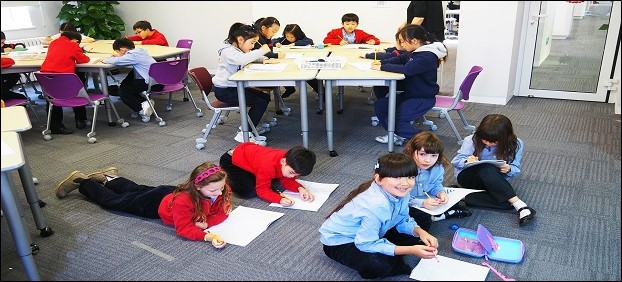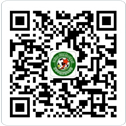A Day in YCIS Beijing’s Learning Community

YCIS Beijing’s newest Learning Community has a lot to offer our Primary School students. Most importantly, it allows our unique curriculum to be employed more effectively than ever before.
Groundbreaking teaching techniques, the flexibility of our innovative spaces and technology integration accommodate each child’s different learning style and help students achieve better academic results.
In this article, we follow Emma Wramner Wang, a current Year 3 student, through some of her daily classes to show how YCIS Beijing’s curriculum facilitates a dynamic and engaging learning experience for our students.
Following the YCIS Beijing’s topic-based curriculum, which allows teachers to build topic units around student interest, students in Year 3 are currently learning about Ancient Egypt. In the morning, after a short co-taught briefing with all of Year 3, students break out into small groups, each group independently seeking out one of a variety of spaces on offer in the Learning Community. Some students choose couches, others the ample open floor space; Emma and her group opt for tables. The spaces themselves have meaning beyond comfort: students know that they can expect greater teacher support in the Confucian forum space, while the Maker’s Space offers more independent learning opportunities.
Their group of three is assigned an iPad plus printed resources which will act as the basis for their research about Ancient Egypt during this session. The resources offer different levels of English, which allows the EAL student in the group to engage just as fully in discussion as their fluent peers.
This exercise enhances research, communication, and language skills in an environment that nurtures discovery.
As part of the same unit, Emma and her classmates are being assessed on their ability to compare Ancient Egyptian life with modern life. In Social Studies class, they’re comparing the houses of ancient Egyptians to the ones they live in now.
Where YCIS Beijing curriculum sets itself apart is in the expression of learning outcomes. While all student learning will be assessed equally, the manner in which students can express their learning is up to them; some students might choose to physically build contrasting models with Legos, others paint or draw, while still others might even create a rap song. Emma has chosen the drawing path and chooses a table with some of her classmates to begin her sketching. She can just as easily choose her personal space should she prefer to work alone, or as before, a separate classroom that may offer increased teacher support.
In YCIS Beijing’s Primary School, the curriculum is the foundation upon which classes are based and students are assessed. However, personal interest and choice allow for students to stay more engaged and focused than a traditional learning environment.
YCIS Beijing’s motto is “Align with Technology,” and the Year 3 Learning Community is no exception. In class, teachers use interactive whiteboards scattered around the community to engage student learning, allowing for both electronic and physical writing.
Additionally, Apple TVs are present in every classroom section and open area, allowing for spontaneous assessment and celebration of student work via direct links with any of the numerous iPads.
In Chinese class, Emma uses this sharing feature not just to share her recent calligraphy practice with her classmates but directly with her parents as well. Students are encouraged to take photos of their work and upload them to the shared server by scanning any of the QR codes on display around the space. Besides providing an effective learning tool, this bridge built between home and school encourages parents to take an active role in their children’s education while also giving students an extra boost in enthusiasm knowing that their parents are watching their progress from home.








